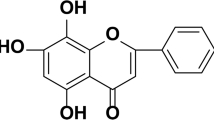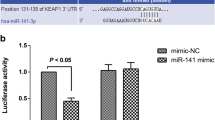Abstract
Objective
To investigate the effect and the potential mechanism of Senegenin (Sen) against injury induced by hypoxia/reoxygenation (H/R) in highly differentiated PC12 cells.
Methods
The cultured PC12 cells were treated with H/R in the presence or absence of Sen (60 μmol/L). Four groups were included in the experiment: control group, H/R group, H/R+Sen group and Sen group. Cell viability of each group and the level of lactate dehydrogenase (LDH) in culture medium were detected for the pharmacological effect of Sen. Hoechst 33258 staining and annexin V/propidium iodide double staining were used to analyze the apoptosis rate. Moreover, mitochondrial membrane potential (△Ψm), reactive oxygen species (ROS) and intracellular free calcium ([Ca2+]i) were measured by fluorescent staining and flow cytometry. Cleaved caspase-3 and activity of NADPH oxidase (NOX) were determined by colorimetric protease assay and enzyme linked immunosorbent assay, respectively.
Results
Sen significantly elevated cell viability (P<0.05), decreased the leakage of LDH (P<0.05) and apoptosis rate (P<0.05) in H/R-injured PC12 cells. Sen maintained the value of △Ψm (P<0.05) and suppressed the activity of caspase-3 (P<0.05). Moreover, Sen reduced ROS accumulation P<0.05) and [Ca2+]i increment (P<0.05) by inhibiting the activity of NOX (P<0.05).
Conclusion
Sen may exert cytoprotection against H/R injury by decreasing the levels of intracellular ROS and [Ca2+]i, thereby suppressing the mitochondrial pathway of cellular apoptosis.
Similar content being viewed by others
References
Rayner BS, Duong TT, Myers SJ, Witting PK. Protective effect of a synthetic anti-oxidant on neuronal cell apoptosis resulting from experimental hypoxia re-oxygenation injury. J Neurochem 2006;97:211–221.
Tang LH, Xia ZY, Zhao B, Wei XD, Luo T, Meng QT. Phosphocreatine preconditioning attenuates apoptosis in ischemia-reperfusion injury of rat brain. J Biomed Biotechnol 2011;2011:107091–107094.
Abdallah DM, Nassar NN, Abd-El-Salam RM. Glibenclamide ameliorates ischemia-reperfusion injury via modulating oxidative stress and inflammatory mediators in the rat hippocampus. Brain Res 2011;1385:257–262.
Papazisis G, Pourzitaki C, Sardeli C, Lallas A, Amaniti E, Kouvelas D. Deferoxamine decreases the excitatory amino acid levels and improves the histological outcome in the hippocampus of neonatal rats after hypoxia-ischemia. Pharmacol Res 2008;57:73–78.
Baliga SS, Jaques-Robinson KM, Hadzimichalis NM, Golfetti R, Merrill GF. Acetaminophen reduces mitochondrial dysfunction during early cerebral postischemic reperfusion in rats. Brain Res 2010;1319:142–154.
Chen Q, Li LK. Protective effect of tenulgenin on cytotoxicity of primary-culture of corti-cal neurons induced by Aβ1-40. China J Chin Mater Med (Chin) 2007;32:1336–1339.
Sun GB, Deng XC, Li CH. The protective effects of tenuigenin on the PC12 cells injury induced by H2O2. J Chin Med Mater (Chin) 2007;30:991–993.
Xie W, Yang Y, Gu X, Zheng Y, Sun YE, Liang Y, et al. Senegenin attenuates hepatic ischemia-reperfusion induced cognitive dysfunction by increasing hippocampal NR2B expression in rats. PLoS One 2012;7:e45575.
Pi T, Xue XY, Lin LF, Su JN, Cheng X, Luo HM. Neurotrophic effects of senengenin on cultures of newborn rat cortical neurons. Chin J Pharmacol Toxicol (Chin) 2011;25:40–44.
Shi F, Lian ZG, Guo ZX, Li R, Yu F, Zhang ZJ,et al. Senegenin promotes in vitro proliferation of human neural progenitor cells. Neural Regen Res 2011;6:171–176.
Qi RB, Lu DX, Wang HD. Mixture of Chinese herbal monomer for the treatment of Alzheimer's disease. China. China Invention Patent: ZL 200710027621.
Shin KY, Lee JY, Won BY, Jung HY, Chang KA, Koppula S, et al. BT-11 is effective for enhancing cognitive functions in the elderly humans. Neurosci Lett 2009;465:157–159.
Sarkey JP, Chu M, McShane M, Bovo E, Mou YA, Zima AV,et al. Nogo-A knockdown inhibits hypoxia/reoxygenationinduced activation of mitochondrial-dependent apoptosis in cardiomyocytes. J Mol Cell Cardiol 2011;50:1044–1055.
Skulachev VP. Bioenergetic aspects of apoptosis, necrosis and mitoptosis. Apoptosis 2006;11:473–485.
Chen H, Yoshioka H, Kim GS, Jung JE, Okami N, Sakata H, et al. Oxidative stress in ischemic brain damage: mechanisms of cell death and potential molecular targets for neuroprotection. Antioxid Redox Signal 2011;14:1505–1517.
Zhang QG, Wang R, Han D, Dong Y, Brann DW. Role of Rac1 GTPase in JNK signaling and delayed neuronal cell death following global cerebral ischemia. Brain Res 2009;1265:138–147.
Kamiya T, Kwon AH, Kanemaki T, Matsui Y, Uetsuji S, Okumura T, et al. A simplified model of hypoxic injury in primary cultured rat hepatocytes. In Vitro Cell Dev Biol Anim 1998;34:131–137.
Abe T, Unno M, Takeuchi H, Kakita T, Katayose Y, Rikiyama T, et al. A new free radical scavenger, edaravone, ameliorates oxidative liver damage due to ischemiareperfusion in vitro and in vivo. J Gastrointest Surg 2004;8:604–615.
Atalla SL, Toledo-Pereyra LH, MacKenzie GH, Cederna JP. Influence of oxygen-derived free radical scavengers on ischemic livers. Transplantation 1985;40:584–590.
Cursio R, Gugenheim J, Ricci JE, Crenesse D, Rostagno P, Maulon L, et al. A caspase inhibitor fully protects rats against lethal normothermic liver ischemia by inhibition of liver apoptosis. FASEB J 1999;13:253–261.
Simon HU, Haj-Yehia A, Levi-Schaffer F. Role of reactive oxygen species (ROS) in apoptosis induction. Apoptosis 2000;5:415–418.
Abramov AY, Scorziello A, Duchen MR. Three distinct mechanisms generate oxygen free radicals in neurons and contribute to cell death during anoxia and reoxygenation. J Neurosci 2007;27:1129–1138.
Wang Y, Fang J, Leonard SS, Rao KM. Cadmium inhibits the electron transfer chain and induces reactive oxygen species. Free Radic Biol Med 2004;36:1434–1443.
Son YO, Lee JC, Hitron JA, Pan J, Zhang Z, Shi X. Cadmium induces intracellular Ca2+-and H2O2-dependent apoptosis through JNK-and p53-mediated pathways in skin epidermal cell line. Toxicol Sci 2010;113:127–137.
Zwacka RM, Zhou W, Zhang Y, Darby CJ, Dudus L, Halldorson J, et al. Redox gene therapy for ischemia/reperfusion injury of the liver reduces AP1 and NF-kappaB activation. Nat Med 1998;4:698–704.
Hearse DJ, Manning AS, Downey JM, Yellon DM. Xanthine oxidase: a critical mediator of myocardial injury during ischemia and reperfusion? Acta Physiol Scand 1986;548:65–78.
Müller MJ, Vollmar B, Friedl HP, Menger MD. Xanthine oxidase and superoxide radicals in portal triad crossclamping-induced microvascular reperfusion injury of the liver. Free Radic Biol Med 1996;21:189–197.
Kahles T, Brandes RP. Which NADPH oxidase isoform is relevant for ischemic stroke? The case for NOX 2. Antioxid Redox Signal 2013;18:1400–1417.
Al-Mehdi AB, Zhao G, Dodia C, Tozawa K, Costa K, Muzykantov V, et al. Endothelial NADPH oxidase as the source of oxidants in lungs exposed to ischemia or high K+. Circ Res 1998;83:730–737.
Meier B, Cross AR, Hancock JT, Kaup FJ, Jones OT. Identification of a superoxide-generating NADPH oxidase system in human fibroblasts. Biochem J 1991;275:241–245.
Görlach A, Brandes RP, Nguyen K, Amidi M, Dehghani F, Busse R. A gp91phox containing NADPH oxidase selectively expressed in endothelial cells is a major source of oxygen radical generation in the arterial wall. Circ Res 2000;87:26–32.
Author information
Authors and Affiliations
Corresponding author
Additional information
Supported by the Natural Science Foundation of Guangdong Province, China (No. 2014A030313394), the Project of Science and Technology of Guangzhou, China (No. 2014J4100098), the National Program on Key Basic Research Project (973 Program, No. 2011CB707501), and the Fundamental Research Funds for the Central Universities in China (No. 21613401)
Rights and permissions
About this article
Cite this article
Zhu, Xq., Li, Xm., Zhao, Yd. et al. Effects of Senegenin against hypoxia/reoxygenation-induced injury in PC12 cells. Chin. J. Integr. Med. 22, 353–361 (2016). https://doi.org/10.1007/s11655-015-2091-8
Received:
Published:
Issue Date:
DOI: https://doi.org/10.1007/s11655-015-2091-8




